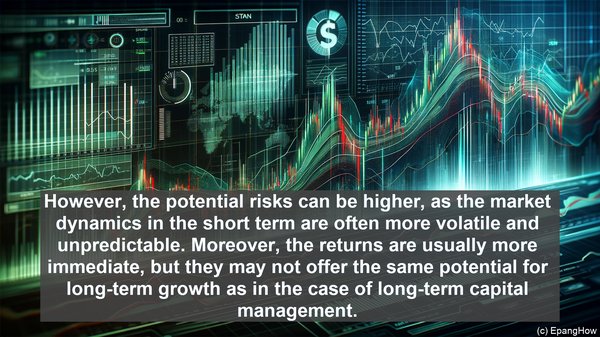Introduction: The Significance of Capital Management
Hello everyone, and welcome to our article on the distinction between long-term and short-term capital management. In the world of finance, capital management is a critical aspect that can greatly impact the success of an organization or an individual. It involves the strategic allocation and utilization of financial resources, with the aim of maximizing returns and minimizing risks. While the overarching goal remains the same, the approaches and time horizons can vary significantly. Today, we will explore these differences in detail, equipping you with the knowledge to make informed decisions.

Long-Term Capital Management: A Strategic Outlook
Long-term capital management, as the name suggests, is concerned with the allocation and utilization of financial resources over an extended period. It typically involves investments and strategies that are designed to yield returns over several years, if not decades. The primary objective here is to generate sustainable growth and build wealth steadily. This approach often entails diversification, wherein the capital is spread across various assets, such as stocks, bonds, and real estate, to mitigate risks. Additionally, long-term capital management is characterized by a more patient and measured approach, as it allows for the potential benefits of compounding and market cycles. While the returns may not be immediate or as frequent as in the short term, the potential for substantial growth over time is a key advantage.
Short-Term Capital Management: Navigating the Dynamic Landscape
In contrast to the long-term approach, short-term capital management focuses on the immediate and near-future utilization of financial resources. This strategy is often employed when there is a need for liquidity or when the market conditions present short-lived opportunities. For instance, a company may engage in short-term capital management to fund its day-to-day operations or to take advantage of a sudden market fluctuation. The investments and instruments used in this approach are typically more liquid, allowing for quick entry and exit. However, the potential risks can be higher, as the market dynamics in the short term are often more volatile and unpredictable. Moreover, the returns are usually more immediate, but they may not offer the same potential for long-term growth as in the case of long-term capital management.

The Interplay: Balancing Long-Term and Short-Term Strategies
While long-term and short-term capital management may seem distinct, they are not mutually exclusive. In fact, a prudent financial manager or investor often employs a combination of both strategies, striking a balance that aligns with their goals and risk tolerance. This blend allows for the potential benefits of both approaches. For instance, the stability and growth potential of long-term investments can be complemented by the agility and potential quick gains of short-term maneuvers. However, achieving this balance requires careful analysis, market awareness, and a deep understanding of the underlying assets or instruments. It is also essential to periodically review and reassess the allocation, ensuring it remains aligned with the changing market conditions and one’s financial objectives.
